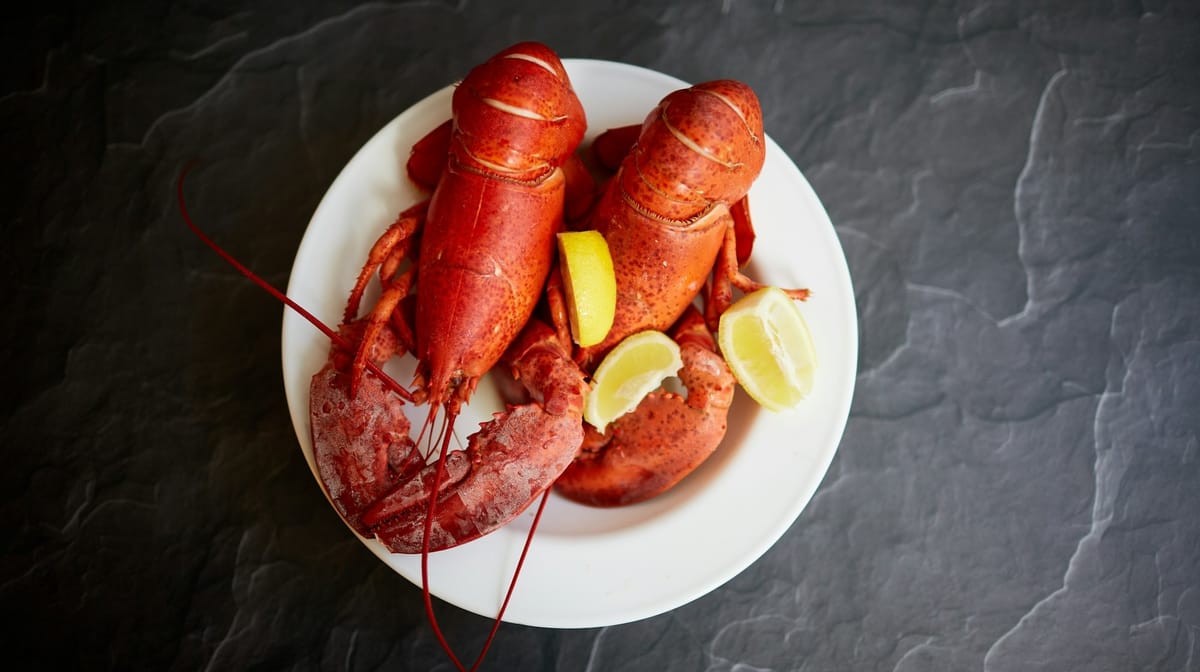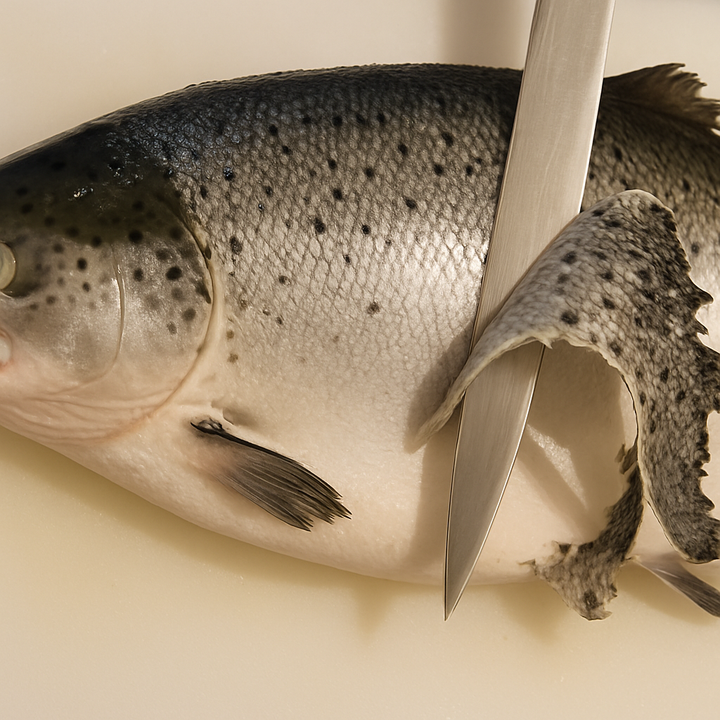Why Is Lobster So Expensive? Uncovering the Cost Factors
Once a simple fare for the less affluent, lobster has risen to become a sought-after delicacy in fine dining and casual seafood restaurants alike. Celebrated for its rich taste and tender texture, this article explores the factors behind its premium pricing and its journey to culinary fame.

Dining out for a Maine lobster meal can significantly impact one's budget. Despite occasional decreases in lobster prices at the docks, restaurant prices often remain elevated.
In major cities, a "moderate" lobster dinner is typically one of the priciest items on the menu. Prices range from $40 to $60 for a 1 to 1.5-pound lobster, with potential increases based on the dining location and the season.
Several key factors explain these high costs.
One primary reason is the absence of commercial lobster farms, which in other fisheries help to supply large quantities at lower costs.
Challenges of Lobster Farming
Lobster farming presents a complex and challenging endeavor in seafood cultivation, marked by a slow and meticulous growth process.
Raising lobsters is not a straightforward task; from eggs to adulthood, they require careful nurturing due to their vulnerability to diseases, which can hinder their ability to eat and grow.
These risks are compounded by the fact that not all lobsters are safe for consumption.
A significant aspect of lobster farming is the lengthy growth period. It typically takes about seven years for lobsters to reach a legally catchable size, and approximately a decade to grow to around 2 pounds.
This slow growth necessitates a sustainable farming approach to ensure a steady supply of lobsters year after year.
Adding to the complexity, lobsters have a high appetite and are prone to contagious diseases, which pose additional challenges for farmers.
Despite these difficulties, advancements in lobster farming continue.
A notable development is the establishment of the first commercial lobster farm in Asia, focusing on cultivating the spiny lobster, such as the Pearl Lobster, a different species from the cold water American lobster.
This venture represents a significant step in the evolving practice of lobster farming, demonstrating both its challenges and potential.
Understanding Lobster Fishing Seasons
While lobster fishing occurs year-round in certain areas, such as Maine, the true lobster season is relatively brief, spanning only a few months.
Maine experiences its prime lobster season from July to November, a period when lobsters are most active and easier to catch, leading to higher yields for fishermen.
Outside of this peak season, lobster prices often surge due to decreased availability and the increased difficulty of catching them.
Typically, the lowest prices for lobster are seen in May and June, but as the season winds down, the cost per pound generally increases, particularly from late winter through early spring.
High Shipping Cost
Shipping live lobsters, especially from regions like Maine, is an expensive and delicate process, necessary due to their susceptibility to bacterial contamination and diseases.
The best practice is to keep lobsters alive until cooking to minimize these risks.
This, however, entails specific shipping requirements regardless of the distance from Maine.
The lobsters need a specialized container that maintains appropriate water temperature and humidity levels, with sufficient oxygen to ensure their survival during transit.
The cost of shipping is a significant factor, especially for long distances. For instance, shipping live Maine lobsters to California can exceed $30 per lobster.
Bulk orders are common to mitigate the risk of some lobsters arriving dead, but this also means the cost of any dead lobsters is factored into the overall price of the shipment.
As a result, markets relying on wild-caught lobsters must navigate these challenges to provide live lobsters to customers far from the catch area.
Lobster Taste The Best When Cooked Alive
The culinary preference for cooking lobsters alive is driven by both taste and health considerations. Lobsters, when frozen or cooked after death, often become tough and rubbery, compromising their desired texture and flavor.
Consequently, most lobsters served across the country are sourced from the live-lobster market.
Cooking lobsters alive is also a safety measure against bacterial infection. Lobsters are prone to bacterial infestation, which can pose a health risk if not handled correctly.
Cooking them immediately after their death minimizes the risk of bacteria growth and potential spoilage of the meat.
In the live lobster market, the more robust and lively lobsters are typically selected for restaurants and retail stores, where customers have the option to purchase live lobsters.
On the other hand, lobsters that appear less vigorous are often directed to processing plants. This segregation ensures that the best quality lobsters reach consumers who prefer them fresh and alive.
Labor-Intensive Process Behind Processed Lobster
The process of extracting lobster meat for shipping, as opposed to sending live lobsters, involves intricate technology and considerable manpower, often resulting in a higher cost for the processed product.
This technology, essential for separating the meat from the shell without cooking, is not only expensive but also labor-intensive.
The high number of workers required for this process inevitably increases the cost passed on to the consumer.
Extracting lobster meat is a delicate task. The goal is to harvest only the meat, which proves challenging when the lobster is uncooked.
Cooking lobsters before processing can lead to the meat becoming tough upon later preparation.
To circumvent this, some processing companies utilize high water pressure techniques, allowing for easier meat separation while maintaining freshness.
This method also makes the processed lobster simpler to transport. However, most facilities employing this advanced technique are located in Canada, with only a singular company in the U.S. using this approach.
This regional concentration adds another layer to the complexity and cost of processed lobster production.
Costs of Lobster Intermediaries
Lobsters embark on a complex journey before they reach your dinner table, transitioning through various stages and increasing in price at each step. Initially, lobsters are caught by fishermen.
From there, they are sold to dealers. Depending on their destination, these crustaceans may then be directed towards either live markets or processing facilities.
Following this, lobsters find their way to consumers either through grocery stores or restaurants.
At each of these points, the cost of the lobster escalates due to the various people involved in its journey who need to be compensated, as well as the need to factor in any losses incurred during the process.
This economic progression explains why a lobster roll might be priced at $20, while a luxurious lobster meal in an upscale restaurant in a major city can cost around $60.
The Public's Perception of Lobster as a Status Symbol
Lobster's transformation from a simple fertilizer ingredient to a luxury symbol is a unique culinary evolution.
Initially boosted by the growth of railroads and tourism in the 20th century, lobster has become synonymous with luxury and fine dining. This sea delicacy is now a mark of wealth and sophistication.
The perception of lobster as a luxury greatly influences its price. Diners often see it as a special treat and are willing to pay more for the experience. This higher price, in turn, keeps its luxury status intact.
Interestingly, the cost of lobster enhances its appeal. This is similar to how people enjoy expensive wines more, even if blind tests suggest otherwise. If lobster were as cheap as chicken, it might lose some of its special appeal.
The high price also reflects quality concerns. Lobsters are delicate, and a low price can signal poor quality or safety risks, making the higher cost a sign of good quality.
In summary, lobster's high status is due to a mix of history, public perception, and quality. Over time, it's become more than just food – it's a symbol of gastronomic indulgence.


